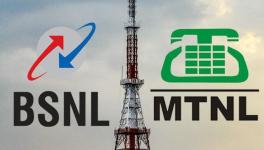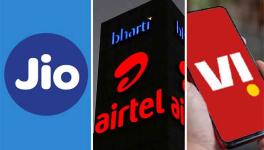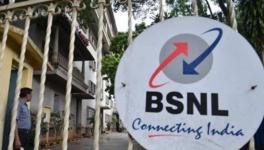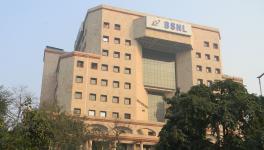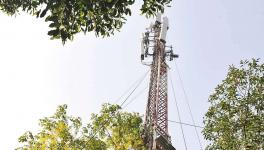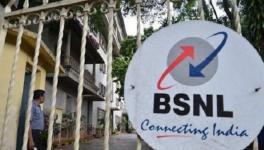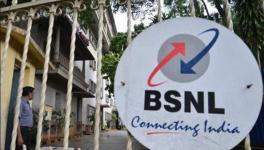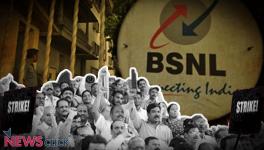The New 3G Scam: Har Friend Zaroori Hota Hai
The more things change, more they remain the same in Telecom. Even after the massive 2G scam that has rocked the country, more of the same are in the offing. In 3G, various parties are now violating their license terms and conditions by offering services in service areas where they do not have licenses. And true to form, DoT continues to wink at such violations despite various organisations including BSNL's unions having brought this to their notice.
Briefly, the salient features of the current scam is that 3G licenses were offered for auction in 2010, using a multi-stage bidding process. In this, Vodafone, Bharati Airtel and Ideas, decided that they would not bid for all the service areas but bid in a way that at least 1 of the 3 parties secured license for each state. This strategic bidding becomes obvious if we see the successful bids – in none of the service areas we have all the 3 parties, and yet virtually no service area has been missed out, one or other party has secured license for every service area except the lone state of Orissa. Out of 22 service areas, Vodafone has secured license for 9, Airtel for 13 and Idea for 9. Against the total license fee of Rs. 16,750.6 crore, Vodafone has paid Rs. 11,617.9 crore, Airtel 12,295.5 crore and Idea only 5,254.6 crore, saving thereby over Rs. 20,000 crore, if they had to secure a pan Indian license. And yet, by using each other's network, they are now offering full blown-pan Indian services – they now have customers for areas they do not hold licenses.
Wherever they are offering services where they do not have a license, they pretending that they are using roaming arrangements. GSM Association, representing GSM operators worldwide, defines roaming as, “.. is defined as the ability for a cellular customer to automatically make and receive voice calls, send and receive data, or access other services when travelling outside the geographical coverage area of the home network, by means of using a visited network”. Clearly, roaming cannot involve subscribers who do not have such a home network but are roaming on another network as home. It cannot be used to offer services in areas where the operator does not have a license or a network.
Interestingly, one of the recurring feature of Telecom scams have been that the current scam becomes incorporated in the next policy. Now a new Telecom policy is in the offing – the NTP 2011. True to form, there are now indications that the policy will allow “sharing” and “trading” of spectrum to “regularise” the current violations. Shades of the Limited Mobility, under which guise Reliance Communications, earlier Reliance Infocomm, tried to offer full blown cellular services, which was finally regularised as UAS license in 2003 by the NDA Government.
A set of services can be offered using wireless spectrum: through radio waves, it is possible to offer mobile voice services or Internet services. The G in 2G or 3G refer to the kind of technology used: 2G is Second Generation technology, both GSM and CDMA. India never used first generation cellular or mobile technology which was analogue – it started straight way with digital technology, which was considered second generation. Initially, India, like many other countries, chose GSM technology as the standard, allowing easy roaming by the subscribers, not only between circles but also abroad. GSM was the de facto global standard except in the US and countries close to US technology players. In the US, instead of GSM, initially digital AMPS was used followed by CDMA technology.
The cellular tenders for both metros and the circles had GSM as the only acceptable technology. Subsequently, the Basic Services Operators (land line operators), who were allowed Wireless in the Local Loop (WiLL) -- connecting the subscriber's homes to telephone switch via wireless – started using CDMA for this purpose. This resulted in the infamous Reliance Infocomm's scam in which the WiLL spectrum was used to offer full mobility in violation of the license terms and conditions. This was fought in TDAST and in the Supreme Court, with both judging that the Basic Service Operators could not convert WiLL to full blown cellular services as it was a different license. Finally, Arun Shourie overrode these orders by bringing in a Unified Access Service License in 2003 that allowed Basic Service Operators to offer cellular services by paying the 4th operator's equivalent license fee. This is the UASL license fee – Rs. 1658 crore -- discovered through a multi-stage bidding process in 2001. This is of course also the sum that Raja fixed in 2008 for the new 2G license.
The 3G license is an amended version of the original UAS License and refers to the 3G spectrum for mobile voice, data, video and internet services. It is clearly a new service requiring a separate license which was what the 3G auction was all about.
As per the UAS License, it is very clear that under clause 2 (a)(i) the licensee is not allowed to offer any other service if it requires another license. Obviously, offering 3G service in a service area for which the operator did not have a license is explicitly barred under this clause. However, though the three parties – Vodafone, Airtel and Idea -- have been advertising for subscribers for areas that they do not hold licenses and have openly declared that they have such subscribers on their website.
There are two sets of issues that arise out of the violations of the 3G license. One is the loss to the exchequer that has taken place for violating the conditions of bidding and entering what is patently collusive behaviour in the 3G auction. The second is the damage to other parties who secured licenses and are operating within their license conditions, particularly BSNL and MTNL, who together have a pan Indian license. We will take each of these issues separately.
The 3G auction was a multi-stage bidding conducted in April-May, 2010 over 34 days and 183 rounds of bidding. A total of 9 parties participated for the 22 service areas. In some of the areas, based on the frequency or spectrum avoidable, there were 4 slots/ licenses available while for others, there were only 3 slots. Though the reserve price for the 3G spectrum for all the 22 circles was Rs. 3,500 crore, the price went to Rs. 67,719 crore, indicating the value of the 3G license.
The procedure for the auction was that in each round, parties would bid for the round price, with the first round starting at the reserve price. If the bidders were were equal or less than the number of slots for the service area, the bidding would stop. If not, in each successive round, the round price would be increased by a percentage varying from 1-5%, depending on the excess demand – the number of bidders that was more than the number of slots in that service area.
Obviously, if the bidders could collude amongst themselves, they would reduce the number of bids and could keep the round prices lower. As the bidding went on over 34 days, the bidders could – if they wanted to violate the bidding terms – work out a collusive strategy. They could decide that they would not quote for all the service areas but allocate who would bid for which area. If we look at the winning bids, we see a clear pattern – the three parties Vodafone, Airtel and Idea in the final round did not have any service area where all the three had quoted. They had at most two bids amongst themselves for each of the service areas in the final round, in some cases, only one. Apart from Orissa, they had at least one successful bid in every service area in the final round. This is almost statistically impossible as a coincidence without collusive bidding.
There is no doubt that without such collusive bidding, the final 3G license prices would been higher. The round prices would have been higher in each round with with more bids in the fray and therefore more excess demand and the number of rounds would have also increased. By artificially reducing the numbers by such collusive bidding, the three parties have kept the final prices lower by at least 25%. Not only they, but also all the successful parties have paid lower and the total loss to the exchequer is therefore of the order of Rs. 15,000 to 20,000 crore.
However, this is not the whole story. This collusive bidding was not only for keeping the final license price low. It is now clear that the parties had no intention of abiding by the license terms and conditions and wanted to offer full 3G services in all the areas by using each others licenses. This is particularly important as there are now a whole generation of equipment – tablets, I-Pads, Kindle book-readers all of which need 3G services to provide full benefits of the devices. For an operator to provide all India coverage is important as obviously manufacturers of such devices would like to tie-up with parties who have such spread. Having limited coverage would mean that other operators with a better spread would have an advantage. Therefore, collusive bidding was only one part, the other part was to offer all India coverage without the necessary licenses. By doing this, even if we take the current final price, they have saved themselves of around Rs.20,000 crore – the cost of the final licenses for those service areas they did not bid but are offering services.
This is not the only saving that these companies have made. As per the 3G license, each of the successful parties have a roll-out obligation and also need to take clearances for their networks and equipment from various authorities. For example, BSNL had already spent Rs. 2,700 crore way back in early 2010 to get ready for 3G services. By not having any roll-out of infrastructure – towers, cells, switches, other equipment, these parties gave saved not only license fees but also the capital expenditure required for building this infrastructure.
This is where the level playing field comes in. Now we have two sets of operators – those such as BSNL&MTNL, who have paid full value of the license, have put in all the required infrastructure, have taken all the required clearances, and others who are just piggy-backing on their “partners”. By sharing spectrum and infrastructure among themselves, they are spending much less to provide the same service.
On would have thought that the past scams in Telecom would have kept the DoT and TRAI alert. But alas, we have the same scenario repeated all over again – a scam is brought to light, authorities refuse to act, a hue and cry takes place, the courts intervene, all the while scam continues. Ultimately, even if a few Rajas are caught, the beneficiaries of the scam still enjoy the benefits. If the 2G licenses were procured fraudulently as is now accepted, none of the parties that procured licenses by such corrupt prices have had their licenses cancelled. In the WiLL conversion to full mobility via UAS License, the companies perpetrating the scam finally got a full pan India cellular licenses without ever quoting for one. And now, we have yet to see any action against parties offering 3G services without licenses. Instead, we have the Minister of Communications and IT talking about an NTP 2011 which will allow spectrum sharing and spectrum trading. No wonder Airtel jingle sings – har friend zaroori hota hai. The question is who are these zaroori friends – are they only Vodafone and Idea, or does the friendship extend much further?
image Courtesy: flickr.com
Get the latest reports & analysis with people's perspective on Protests, movements & deep analytical videos, discussions of the current affairs in your Telegram app. Subscribe to NewsClick's Telegram channel & get Real-Time updates on stories, as they get published on our website.









